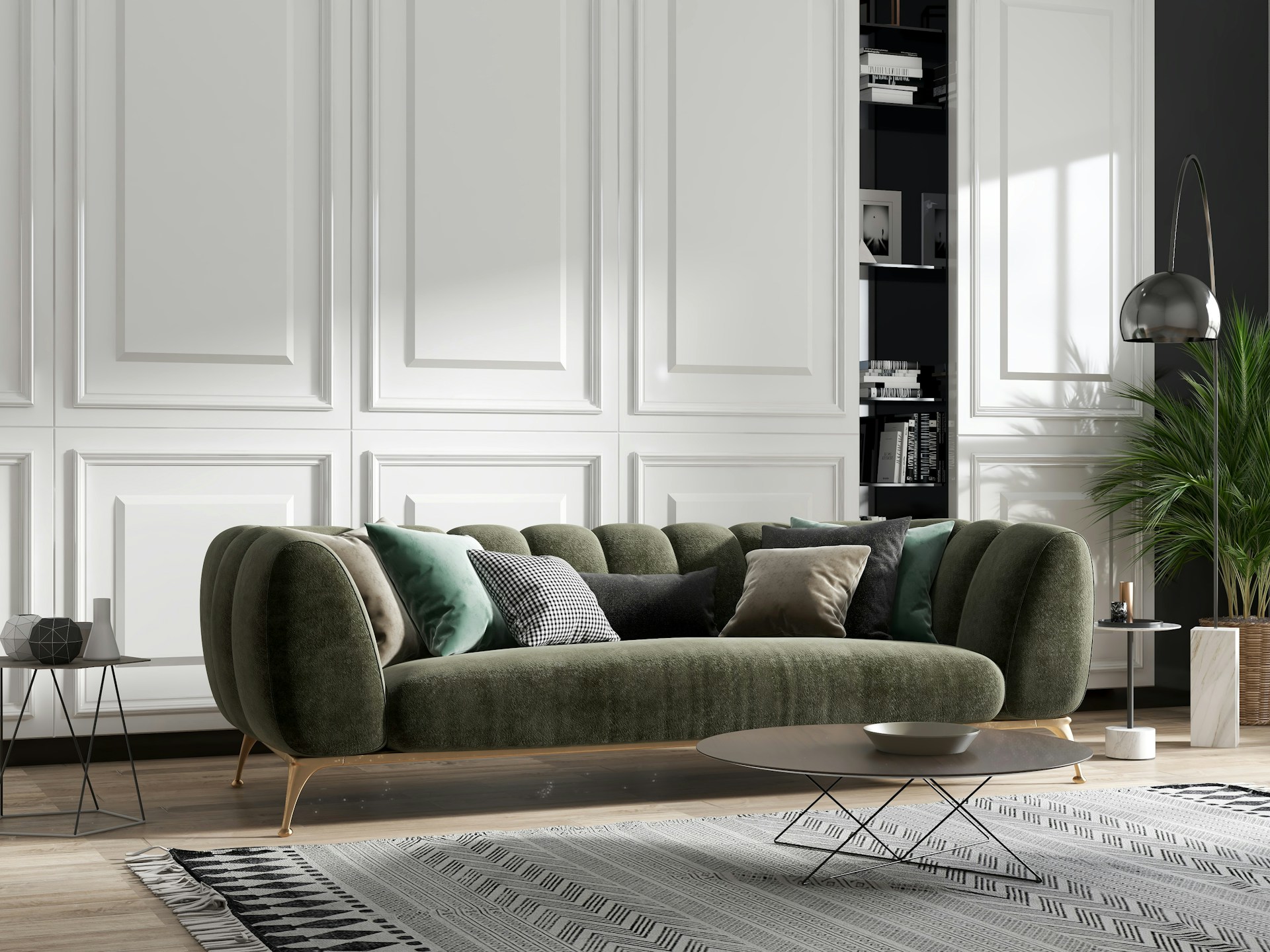Incorporating Textiles into Open Floor Plans
Open floor plans have become a popular design choice for modern homes, offering a spacious, airy feel by combining multiple areas, such as the living room, dining room, and kitchen, into one large, interconnected space. While these layouts provide a sense of openness and flexibility, they can sometimes feel a bit cold or impersonal without the right design elements. Incorporating textiles is one of the easiest and most effective ways to add warmth, texture, and definition to an open floor plan. Here's how you can use textiles to enhance the flow, comfort, and aesthetic appeal of your open-concept space.

1. Define Separate Zones with Area Rugs
In an open floor plan, defining distinct functional areas is essential for maintaining order and flow. Area rugs are an excellent way to do this. By placing rugs in different sections of the room, such as under the living room furniture or beneath the dining table, you create visual boundaries without the need for walls or physical dividers.
When choosing rugs, consider the color, pattern, and texture. Complementary or contrasting rugs can help differentiate each zone while still keeping the space cohesive. For instance, a soft, plush rug in the seating area can create a cozy atmosphere, while a more durable and easy-to-clean rug might work better under the dining table. Just be sure to keep proportions in mind—each rug should be large enough to anchor the furniture in its respective zone without overwhelming the space, such as choosing one of the beautiful 5 by 12 area rugs available.
2. Use Curtains to Soften and Add Privacy
Although open floor plans thrive on openness, there are times when a bit of privacy or separation is needed. Curtains are a versatile textile that can be used not only on windows but also to create temporary partitions between spaces. For example, you can use sheer or lightweight curtains to subtly divide the living area from the dining space or kitchen while still allowing light to flow through.
If privacy isn't the main goal, consider using curtains purely for decorative purposes. Floor-to-ceiling curtains along large windows or glass doors can soften the architectural lines of the room and add a touch of elegance. Choose textiles in rich fabrics or calming neutral tones to complement the overall color scheme of the space.
3. Add Statement Pieces with Large Wall Hangings
In open-concept spaces, large walls can sometimes feel bare or empty. Large-scale textile art, such as tapestries or woven wall hangings, can fill these spaces while adding both texture and a personal touch. Unlike framed artwork, textile hangings add softness to a room, which is particularly useful in open spaces where hard surfaces can dominate.
Choose a wall hanging that complements the color scheme of your room, or opt for a statement piece in a contrasting color to draw the eye. For a minimalist or neutral space, a woven tapestry in earthy tones or a macramé hanging can bring in a subtle, organic texture. In more vibrant rooms, a boldly patterned fabric art piece can make a striking focal point.
4. Incorporate Upholstered Furniture
Upholstered furniture is a key element when it comes to incorporating textiles into an open floor plan. Sofas, chairs, and ottomans covered in fabrics such as velvet, linen, or cotton can introduce softness and comfort to the space. Choosing furniture with textured upholstery helps anchor the room and offers an additional layer of coziness.
To maintain cohesion, use similar or complementary textiles on your upholstered pieces. For example, if your dining chairs have fabric seats, you can tie them in with the living room by choosing a sofa in a similar texture or color family. Don't hesitate to introduce patterns in your upholstery, either—subtle prints or bold patterns can liven up the space and bring a sense of personality.
5. Balance the Space with Sheer Fabrics
Sheer fabrics like lightweight curtains, transparent room dividers, or light fabric hangings can balance an open floor plan by adding softness and fluidity. These delicate materials allow light to flow through the space while still offering subtle visual separation.
For example, sheer curtains can soften large windows without blocking natural light, creating an airy yet elegant atmosphere. You can also use sheer fabrics in unexpected ways, such as hanging them from the ceiling to create a billowy canopy effect, adding a touch of softness to areas like seating nooks or dining spots.
To Conclude
Incorporating textiles into an open floor plan is an excellent way to enhance the warmth, comfort, and overall aesthetic of the space. From area rugs that define zones to layered textures that add depth and upholstered furniture that introduces softness, textiles can help transform a vast open space into a cohesive, welcoming environment. By thoughtfully integrating these elements, you can create a stylish and functional home that feels both expansive and intimate.